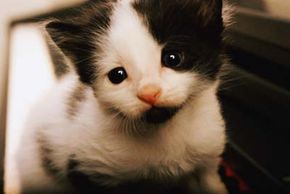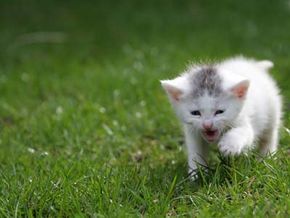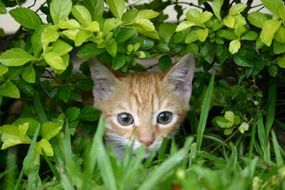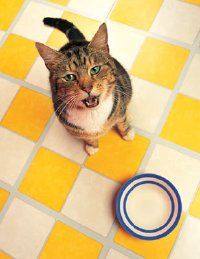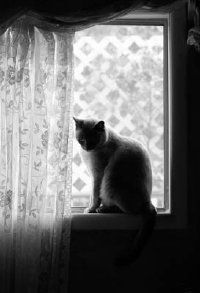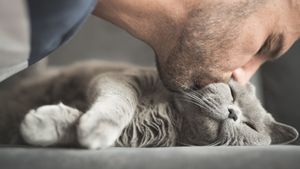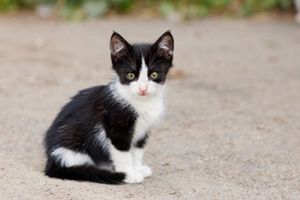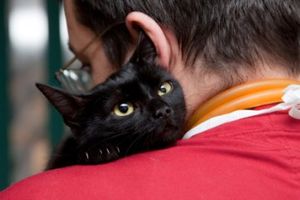You may have heard that cats have nine lives. Well, maybe that's true, but one thing is for sure -- your cat can have a long and healthy life with the proper care. There are many things to consider when caring for a cat, and we'll cover them all in the following sections:
- How to Choose a CatChoosing the right cat can be a big decision. Cat's can live up to 20 years, and a simple adoption can mean a big commitment. In this section, we will show you how to find the perfect cat. We will weigh the pros and cons of an adult cat versus a kitten. We will also examine where the best place is to find a new cat: a shelter, a friend, or a stray. We will also help match a cat to your lifestyle so you can have the cat that truly suits you.
- Choosing an Indoor Cat vs. an Outdoor CatAnother huge decision to make when owning a cat is whether or not you will have an indoor cat or an outdoor cat. In this section, we will first explore whether or not cats need to go outside. Is there an advantage to letting your cat roam the neighborhood? Of course, there are many more dangers in the backyard that in your home. Also, if you do make the decision to let your cat outside, we will show you the safest way to introduce your cat to the great outdoors.
- Cat-Feeding TipsFeeding your cat is obviously an important part of pet ownership. After all, it's one of the few duties that you will have to perform every day. Simply remembering to put some food in your cat's bowl is only the beginning. You must also decide what kind of food to feed your cat. We will also examine how to stop your cat from eating your houseplants, and whether or not you should give your cat "people food." Finally, we will also look at how much water to give your cat.
- Store-Bought Cat Food vs. Homemade Cat FoodIn this section, we will compare the benefits of store-bought cat food and homemade cat food. Homemade cat food has the benefit of giving you the peace of mind that you know exactly what you are feeding your cat. However, in most cases you can probably trust the medically and scientifically designed formulas of the major cat-food manufacturers. We will review the various types of store-bought cat food such as kibble or "wet" cat food. We will examine the pros and cons of each type, and which will be best for your cat.
- Cat-Grooming TipsCats are usually considered to be very clean animals, and, for the most part, this is true. However, this does not mean that cats do not need regular grooming. In this section, we will discuss the proper grooming of your cat. First, we will discuss the grooming benefits of a short-haired cat to a long-haired cat. Next, we will examine whether or not you should seek the help of a professional groomer. Finally, we will show you how to execute proper grooming at home, including how to prepare your cat and when you should stop.
- Cat-Bathing TipsUsually cats do not have to be bathed. Aside from the occasional grooming, most cats are able to clean themselves. There are a few reasons why you would have to give your cat a bath. For instance, if your cat has fleas or gets sprayed with something unpleasant. In this section, we will show you the proper way to bathe your cat. We will show you all the steps from preparing all the equipment you'll need to drying and fluffing.
- How to Cat-Proof Your HomeYour home can be a veritable obstacle course for you cat. While your cat may be able to live happily in your house for many years without encountering an accident, that doesn't mean there won't be danger lurking around every corner. In this section, we will show you all the potential hazards that disguise themselves as common household objects. We will also show you how you can make your house safe your cat and what to do if your cat eats something poisonous.
- Cat ToysMost cat owners love to watch their cat play with the various toys they bought them. However, some of these toys can be dangerous for your cat. Yarn, for instance, a staple among cat toys for years, can actually cause very serious injuries. In this section, we will show you which cat toys are safe for your kitty and which could be harmful.
- Veterinarian Visits and VaccinationsPerhaps the most important step you can take in caring for your cat is finding a reliable and competent physician. In this section, we will show a step-by-step process for finding a veterinarian that will be perfect for both your and your cat. We will let you know the various organizations to which you can turn for vet recommendations. We will also let you know what you should do before your first visit to the vet. Finally, we will examine feline vaccinations and whether they are a must for your cat.
Advertisement

